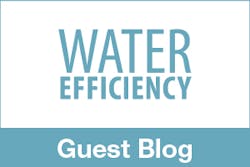Agricultural water use accounts for 80% of all water used in homes and businesses in California, according to the Public Policy Institute of California. I wrote before about the tension between agricultural, environmental, and urban needs in California’s San Joaquin Valley. And it’s not just California struggling with drought; Iran, Australia, Iraq, South Africa, India, the Southwestern United States, and even parts of Canada have experienced water shortages this year. As the population of the planet grows and the climate warms, both water and food demands will increase and farmers around the globe will face the challenge of growing more with less. But innovative, efficient farming and irrigation methods are already helping some of the driest places in the world grow their own food.
The challenge of growing produce is already well-known in water-scarce parts of the globe. Jordan, which is one of the driest countries in the world, must import 98% of its food. “Jordan is dependent on food imports,” Sylvie Wabbes-Candotti, FAO emergency and rehabilitation officer, told the BBC. “Water is really the shortage.”
To address the related problems of water shortages and lack of agriculture in Jordan, the BBC reports that one is using solar power and desalinated water to grow food in greenhouses. The Sahara Forest Project uses the country’s abundant sunshine to power solar panels, which are used to desalinate seawater. The water is used for crops and the runoff to cool the greenhouse. At night, when the desert temperature can drop as low as 44°F, water warmed by the sun during the day and held in pipes in the roof is piped to the plants. Excess water is used in an outdoor garden, where growers are experimenting with different plants’ salinity tolerances.
“A lot of these are well tested environmental technologies,” said Joakim Hauge, president of the Sahara Forest Project Foundation, in the BBC article. “The new thing about this project is how we combine them.”
The project is only a year old, but the goal is to expand the farm to 20 hectares (about 50 acres) in 2020. In the meantime, the Foundation has hopes for a possible pipeline to bring water from the Red Sea, just 10 miles away, to the site. Currently, seawater is trucked in from the coast every few days, which will be unsustainable when the project expands. If all goes well, this kind of farming could offer huge benefits for Jordan. “If you cannot depend on the rain, but have a reliable water supply with this desalinated water, then if you have adequate funding, and master the techniques… you can go produce food and even become an exporter of food,” said Wabbes-Candotti.
To see what the Sahara Forest Project farm could look forward to in the future, we can look at Sundrop Farms. In the desert of Southern Australia, Sundrop Farms began as a small pilot project in 2008, but has since expanded to 20 hectares of greenhouses, The Weekly Times reported last year. Although Sundrop Farms is a hydroponic farm, they too use solar energy to desalinate seawater for watering crops and to manage greenhouse temperatures. But Sundrop also uses seawater to clean and sterilize air in the ventilation system, eliminating the need for pesticides and chemicals. The method appears successful—the farm can provide 15,000 tons of tomato per year and recently secured a 10-year supply agreement with an Australian supermarket chain.
One of the big appeals of farms run on desalinated water is to eliminate agriculture from the competition for water, whether that be from groundwater, stormwater, or water utility sources, meaning less water pumped from the water table and more water left in streams and rivers for fish and other aquatic life.
Desalination, however, is not a magic bullet. Desalinated water lacks some key minerals, like magnesium, which can increase the risk of heart disease and have negative effects on agricultural products. Experts in Israel—which has been using desalinated water in agricultural applications for years—have found “a significant shortage of this important mineral in the water,” reports Haaretz. Adding magnesium back into the water supply or using a fertilizer with added magnesium can address this problem, but there’s also the question of what to do with the salt that is the result of the desalination process. Returning the salt to the ocean could increase ocean salinity and have negative effects on the environment and sea life.
What is clear, however, is that tensions around water are only likely to increase.



